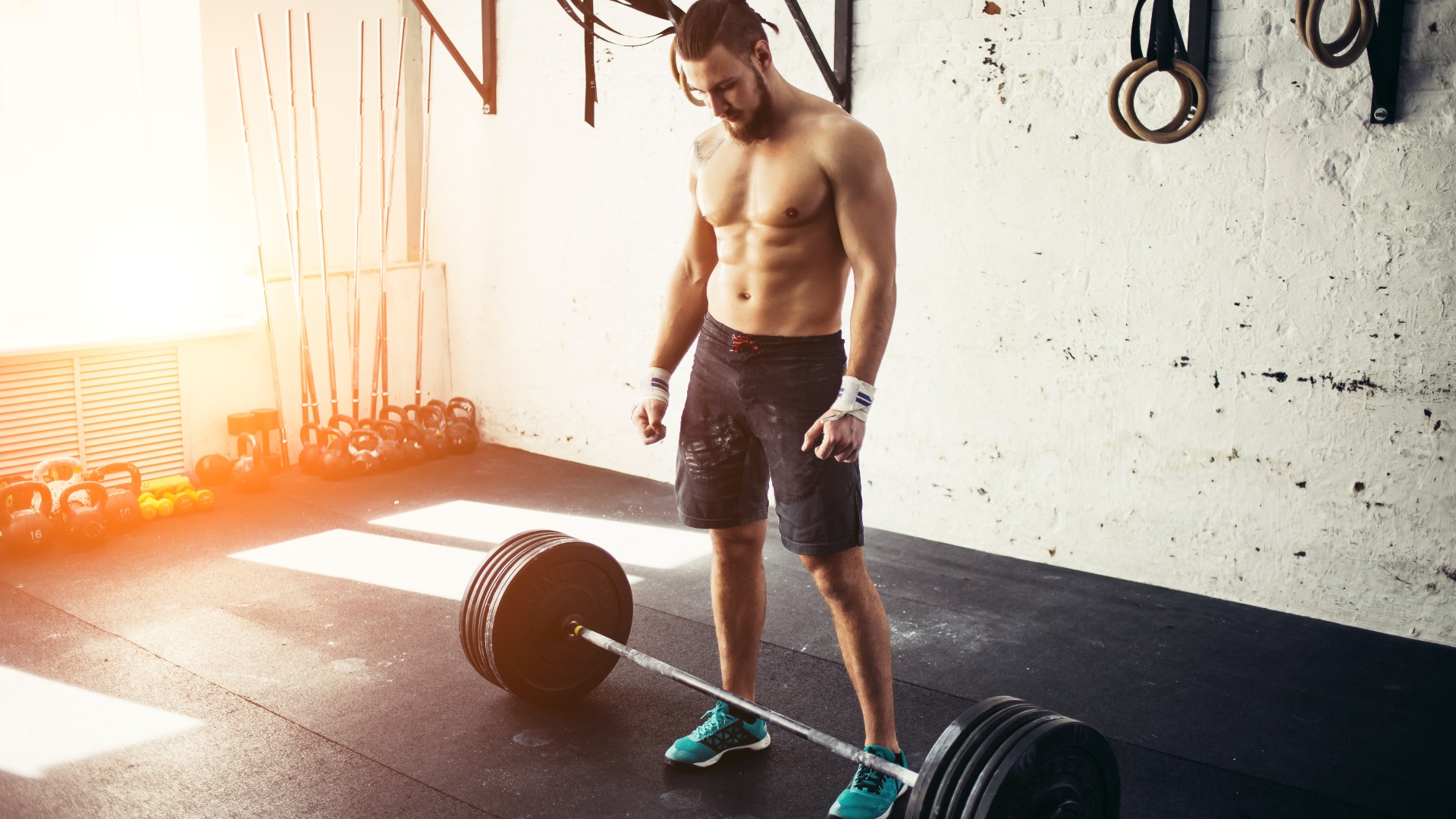
I upped my push-up game by adding 50 barbell push-ups a day to my exercise routine for one week. My chest is still recovering, and I learned a few lessons along the way.
The humble push-up is a staple compound exercise found in functional workouts. They target the anterior deltoids (fronts of your shoulders), pectoral muscles and triceps, engaging your core and developing upper-body strength.
A bodyweight version of a bench press, the move provides a pec pump to those who can tolerate them. And if you can’t, you can still access the exercise using your knees. I haven’t opted into many upper-body fitness challenges lately, so I jumped on this one using a barbell. And the results surprised me. Here’s what happened.
How to do a barbell push-up
As the name suggests, barbell push-ups mean learning how to do a push-up while gripping a barbell beneath you. It’s like flipping a bench press upside down. Here’s a step-by-step.
How:
- Start on your knees with a loaded barbell in front of you
- Grip the barbell with both hands shoulder-width apart and thumbs wrapped around the bar
- Step back into a push-up position with shoulders stacked over wrists and hips in line with your knees. Engage your core
- Bend your elbows to perform the push-up, lowering your chest to the bar
- Keep the barbell as still as possible, pause at the bottom, then drive back up to your starting position with power.
Your chest should track over the bar throughout. Avoid arching your lower back and look slightly forward to keep your spine neutral. If you struggle to control the barbell, try the move from your knees instead.
I did 50 barbell push-ups every day for a week — here are my results
Here’s how it went.
Sign up to get the BEST of Tom's Guide direct to your inbox.
Get instant access to breaking news, the hottest reviews, great deals and helpful tips.
Day 1
The 50-rep range is standard for push-ups within strength programs, but the stability and balance required to keep the barbell in place torched my muscles, particularly the arms, and I felt smoked after.
The sheer effort of focusing on the push-up while preventing movement below me placed my muscles under greater tension, working them harder under the load of my body weight. It forced my core to stabilize my torso and shoulders to hold my weight over the bar. I’m glad I didn’t aim for high reps on this one.
On day one, the reps and sets were as follows: five sets of 10 reps.
Days 2 & 3
After the first day, I noticed how much more focus I put into engaging my core. Core engagement is crucial for preventing your hips from dropping or bum lifting too high as you move, keeping you and the barbell stable.
I hit the shakes much quicker than usual, so I reluctantly dropped to my knees on the last few reps of each set. It’s a good idea to have at least 10 reps of solid bodyweight push-ups in your repertoire before graduating to a barbell. But it’s a great alternative to a bench press while still relying on your body weight and targeting the same muscle groups.
Days 4 & 5
If you’re already thinking about trying the barbell push-up, you’ll need an existing degree of strength and stability. If you have a shoulder injury, I wouldn’t recommend it.
But there are a few ways to approach it. Start by racking the barbell low down (see below) and practice using the bar from a stable position. Then place a loaded barbell on the floor and position weights close on either side to prevent the barbell from moving far if you lose control. You could also use your knees, like me, until you feel more comfortable.
I enjoy push-ups, and thankfully, I have a strong core that I found helpful for controlling the barbell. Despite this, I had to use my knees more than expected, and my upper body felt smoked after five days, despite 50 reps being a pretty “standard” amount.
Days 6 & 7
I enjoyed this challenge, which is more than I can say about my recent escapade into 90 pistol squats every day for one week. What surprised me most was how much the humble barbell brought me to my knees (quite literally).
Push-ups are one of my more accomplished exercises, but suddenly, I was shaking through every rep. If you’ve got push-ups locked down and want to develop bodyweight upper-body strength without weights, here’s your chance. Equally, if you’re confident with push-ups and barbell push-ups and fancy a challenge, increase reps and avoid using your knees.
More from Tom's Guide

Sam Hopes is a level 3 qualified trainer, level 2 reiki practitioner and senior fitness writer at Tom's Guide. She is also currently undertaking her Yoga For Athletes training course. Sam has written for various fitness brands and websites over the years and has experience across brands at Future such as Live Science, Fit&Well, Coach, and T3.
Having worked with fitness studios like F45 and Virgin Active, Sam now primarily teaches outdoor bootcamps, bodyweight, calisthenics and kettlebells. She also coaches mobility and stretching-focused classes several times a week and believes that true strength comes from a holistic approach to training your body.
Sam has completed two mixed doubles Hyrox competitions in London and the Netherlands and finished her first doubles attempt in 1:11.
